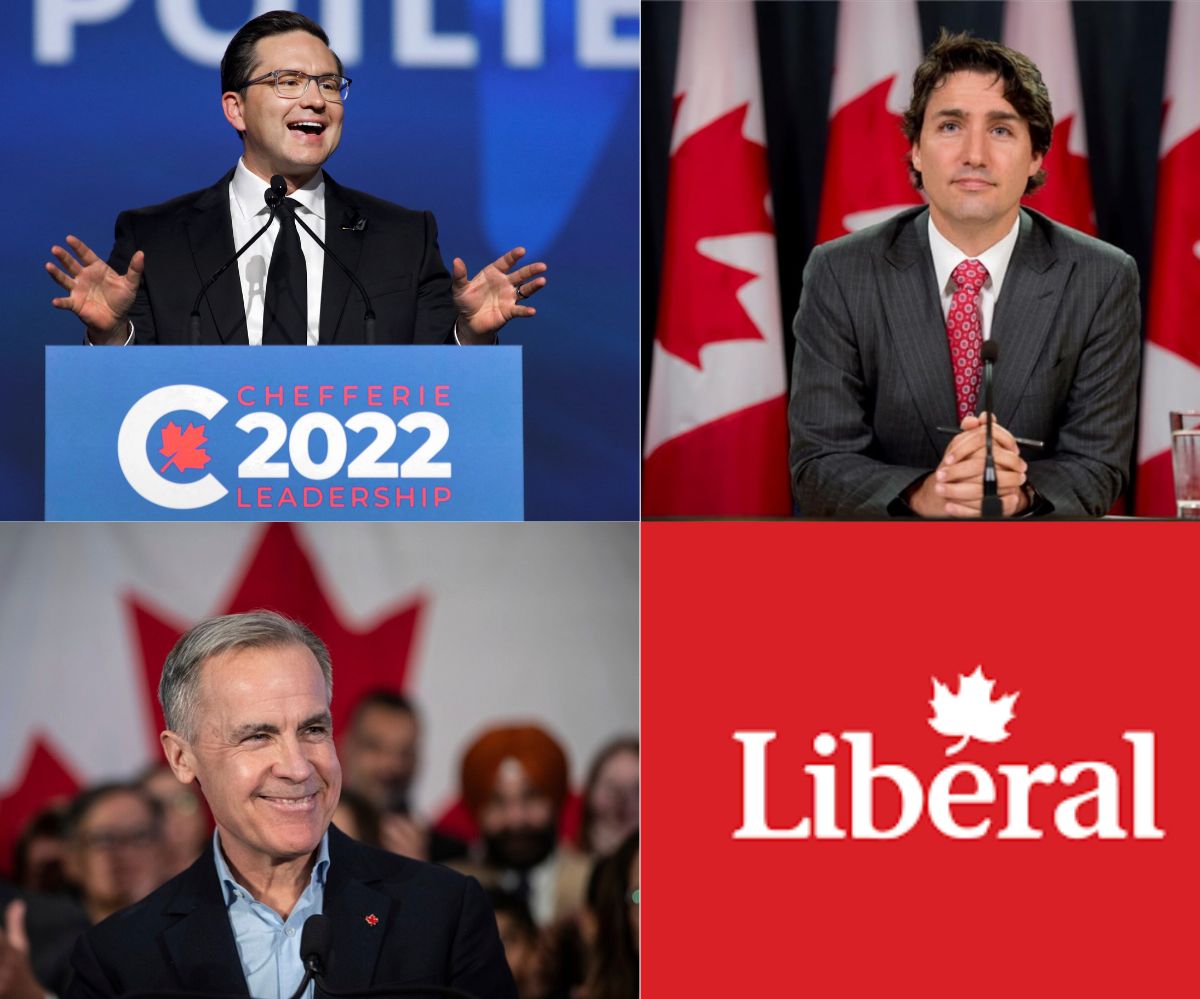Amidst Canada’s trade war with the U.S., recent polling shows that a surge in voter support for the Liberals places them a mere point behind the Conservatives after months of trailing behind.
Less than a month ago, Nanos polling measured voter support for the Conservative Party of Canada at 37 per cent, with the Liberals trailing behind at 33 per cent. This polling was fairly similar several months prior.
However, March 7 brought new polling numbers that revealed an uptick in voter support for the Liberal Party a few days short of the party selecting their new leader, with the Conservatives measuring in at 35.7 per cent and the Liberals exactly one point behind at 34.7 per cent.
Similarly, a Leger poll from March 10 showed a similar uptick in support for the Liberals, in which the parties were tied at 37 per cent of voter support.
There is no doubt that the recent trade war incited by the U.S. is on voters’ minds as we progress closer to the recently announced early election taking place on April 28. The tariff conflict poses a tangible threat to Canadians, emphasizing the need for voters to research where they are placing their support to ensure Canada’s economy and industries remain protected.
In the context of Canada’s trade war with the U.S. — which will likely last for the “foreseeable future” according to former Prime Minister Justin Trudeau — here are some factors that could contribute to a continued shift in support toward the Liberal Party.
Trudeau’s response
Since President Trump signed tariff orders on Feb. 10, the Canadian government has been working hastily to defend the economy. The seemingly newfound aggression in Trudeau’s Liberal government led many to assert that the trade conflict “revived” the party from the large amounts of dissatisfaction voters had with them over recent years due to contentious issues like the rising cost of living after the COVID-19 pandemic and the consumer carbon tax.
It is quite likely that Trudeau’s comprehensive counter-tariffs onto American industries, which include 25 per cent tariffs on $30 billion of U.S. goods, with tariffs on $125 billion worth of goods still pending, relit a fire within the party. The situation is reminiscent of the promising position Trudeau held when he initially became the leader of the Liberal Party back in 2013.
Mark Carney takes over as Liberal leader
When your country is in a trade war, it’s helpful if your prime minister doubles as a lifelong economist — at least, this is what the recent Liberal leadership election seemed to suggest.
A former governor of both the Banks of Canada and England, Mark Carney was elected to be the new leader of the Liberal Party and Prime Minister on March 9, following Trudeau’s promise to resign.
Carney faced overwhelming success at the polls, winning 85.9 per cent of the vote. It is significant that the Leger poll showing equal support for the Liberals and Conservatives gathered research from March 7 to March 10 — allowing two full days of polling to be collected after Carney was elected. Considering voter concerns with the cost of living under the Liberal government, Carney put forth his finance-focused vision for Canada at a news conference before the government’s first cabinet meeting, outlining that he has already set up meetings with several European countries to “diversify” Canada’s trading partners.
With his economic experience, Carney faces the electorate in times where he could use his past career to his campaigning advantage.
Pierre Poilievre and “Trump comparisons”
Comparisons between Poilievre and Trump are not new. In November of 2024, Le Monde called Poilievre “Trump-inspired” because of his insult-heavy political voice and overall support from those in Republican circles, naming Elon Musk as one of these supporters after he endorsed Poilievre on X.
According to CBC News, Poilievre has been accused of “borrowing policy” from Trump after saying that the government would conduct “massive” cuts to foreign aid to fund an Arctic military base in early January, leading to broader comparisons to the U.S. president in Liberal attack ads ever since.
In a recent ad titled “Made-in-America,” clips of Poilievre and Trump repeating similar phrases are spliced together, with text directed at Poilievre asking: “How can you speak for Canada when you sound like Donald Trump?”
As evidenced by polling over the past year, Poilievre’s take on Trump’s populist strategies were initially successful when juxtaposed next to vast dissatisfaction with Trudeau. However, the trade war with the U.S. has made any tactics associated with Trump quite contentious for Canadians.
Poilievre’s backing from Republicans and his overall Trump-like image could pose a threat to his campaign in the next election if he continues to pursue this strategy — as Conservative strategists have encouraged him to do — which might lead to increased support for the Liberal Party as a result.
—
Despite what preliminary polls might suggest, the parties still have time to outline their campaigns before this year’s election as the trade war progresses. Whether each party will continue in their current directions or respond to polling trends remains unclear.

